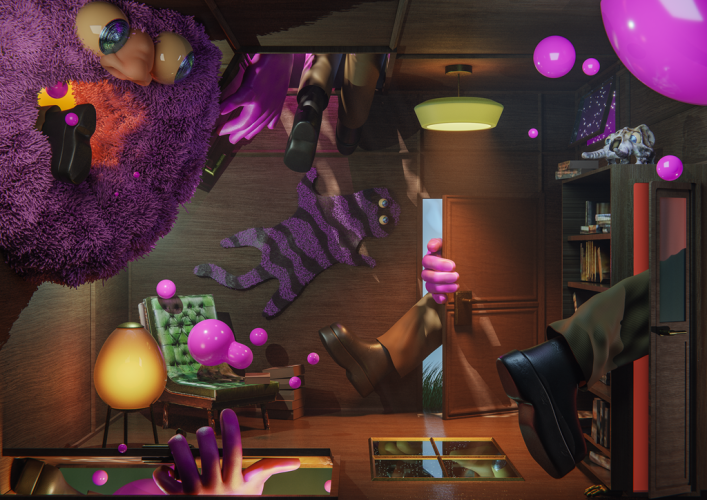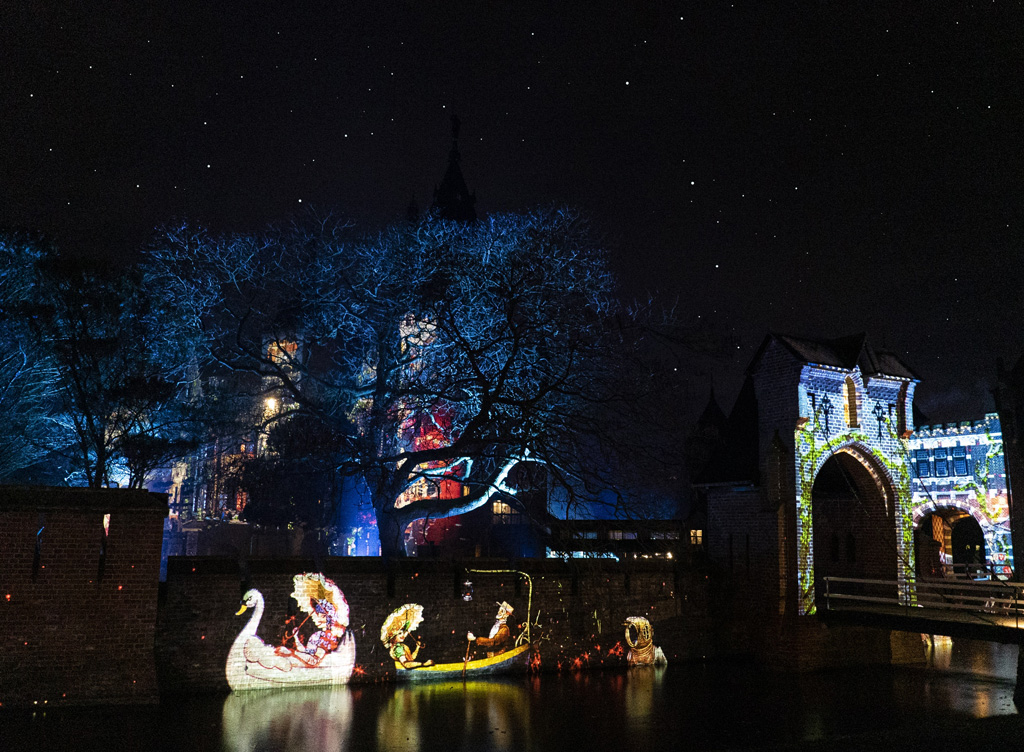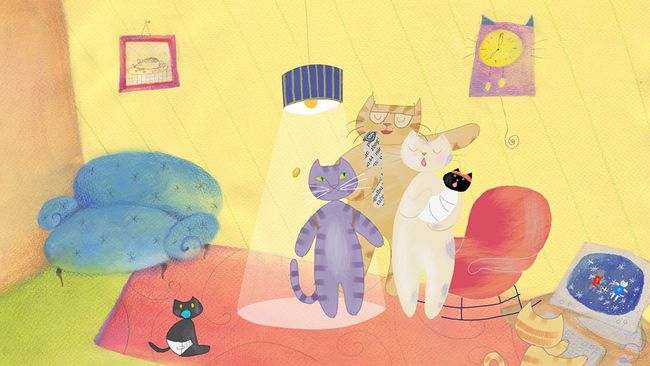Mysterious rooms, colourful decors, interactive installations and surrealistic spaces. Welcome to the Doloris Anoma Maze, a place to lose your bearings and prime your senses. Three artists tell you more about the work you can see in the maze. That is, if you’re able to find it…
Immerse yourself in a never-ending series of magical settings: that’s the point of the Doloris art maze. In 2019, Joep van Gorp opened Doloris Meta Maze in Tilburg, which comprised 40 spaces for people to get lost in. It soon became a hit with visitors every weekend. He came up with the idea after visiting the Berlin Peristal Singum art maze. And now, five years after the huge success of the Doloris Meta Maze, a similar maze has been opened in a former industrial train shed on Tweede Daalsedijk in Utrecht. Climb, clamber, wander around, feel but most importantly, keep your eyes peeled: anything goes here. Well, anything apart from mobile phones and watches. These are banned as they distract from the experience.
Mysterious
The Utrecht Doloris Anoma Maze has almost twice as many rooms as the maze in Tilburg. Twenty Utrecht-based artists worked on the maze after applying via an open call. Apart from the practical restrictions, they were given free rein to design their rooms. The selection comprises a mix of local young talent and established artists, such as Margriet van Breevoort, Gijs Frieling and the High on Type collective. The maze incorporates every art discipline, from music to video installations. But the press releases, website and interviews give nothing away about what you can expect in Doloris. There are no pictures of the rooms, and all the artists had to sign a confidentiality agreement. The reason? ‘It’s all about the experience,’ Joep explains. ‘And surprise is one of the most important elements of the experience. Nowadays, we’re used to sharing everything, so we’ve lost all sense of surprise and amazement. That’s why we’ve banned telephones in the maze. So you can be really receptive to the unexpected and encourage yourself to be surprised.’
Black hole
You could call the art maze an ‘immersive art experience’. But Joep wants to stress the fact that Doloris isn’t a technological museum. ‘We’re more on the artistic side.’ He wants to challenge visitors to step out of their comfort zone, by offering them a ‘deeper layer’. ‘In our maze in Tilburg, you can decide whether to move to the left, right, up or down. You can choose your own route in Utrecht too, but we’ve added extra elements for visitors who are brave enough to take things a step further. You can jump into a ‘‘black hole’’, for example, or sit on an object that flies you though space. We’ve tried to make it exciting, but not scary. You repeatedly face the question: how much do I trust my own judgement? Am I brave enough to face the unexpected?’
From hyper-realism to surrealism, from installations to classical paintings: it would be hard to find an art discipline that isn’t represented in Doloris Anoma Maze. The idea is to transport visitors from one world to another. Joep: ‘The settings and themes alternate constantly. Which? That’s up to visitors to find out. Our ultimate aim is to make visitors marvel. We’d love them to prime all their senses and emotions so that the maze makes a deep impression on them. We like to compare what we’re trying to achieve with climbing a mountain. You encounter all kinds of views on your way up, some of them relaxing, some of them unnerving. But when you reach the summit, it’s pure euphoria. That’s how I’d like to people to experience Doloris.’
Alice in Wonderland
Juliet Campfens makes miniature worlds
‘When I visited the Peristal Signum art maze in Berlin ten years ago, I felt like Alice in Wonderland. I was thrilled by that mysterious feeling of not knowing what to expect. The usual rules don’t apply in a maze. You see and hear all kinds of things that trigger your senses and spark your imagination. My first thought was: if this ever comes to the Netherlands, I’m in!
I’ve got a studio on the Hof van Cartesius and I’m often inspired by old factory buildings and industrial terrains. The abandoned, slightly sinister, vibe in these places appeals to me. But so does the opposite: the fact that a tree can suddenly grow in the middle of the asphalt. It didn’t take me long to realise that I wanted to do something with industry and a place where life grows, in this case, nature. I created a miniature world for Doloris, a world where this is happening.
I loved having so much artistic freedom. I’m a collector so I went straight to my personal stock of bits and pieces. I’ve got a collection of metal objects, for example, including a sink plug, a cup for an espresso machine and door hinges. I saw shapes for a factory in these objects. And once I’d started, I saw potential material wherever I looked.
The rest of the maze is fairly manic; I hope that visitors can pause and catch their breath in my section. It would be good if they went along with the illusion that they’re just as big as the world they’re looking at, if they could picture themselves in a different universe and let their imagination run wild.’
Cyber cave
Vincent Schoutsen creates interactive installations with sound
‘I was onboard with the idea of creating my own art room right away. I’m not afraid to make large-scale objects. As an artist, I see it as my mission to make the world more magical. I used to be a physicist, and I’m often consumed by the concept of mathematical, geometric and natural patterns. My first idea was to do something with tortoise shells, giraffe patches and coral, something that unites maths and nature. But I eventually went off in the cyber direction. The key to my room is the sounds created by using wood. The sounds are generated when you enter the room and fit in with the visual surroundings. It sounds electronic, as if there’s a machine in the wall and you’re walking through the depths of a cyber cave. It’s a pity that I can’t share this work on social media, as I’m proud of the imposing installation I’ve created.
I think the whole Doloris experience is pretty psychedelic. It would be fun if visitors could let go of their thoughts and just go with the flow of all the different worlds.’
Stillness
Jonas Wijtenburg makes spatial installations and sculptures
‘I think the amount of time we spend on our phones is becoming a problem. The fact that telephones are banned in Doloris, so that visitors have to rely on their primary senses and really feel the experience, is what persuaded me to take part. And I was looking forward to experimenting with new techniques. I used the classic plaster mould as the basis of my room – literally the shape around a shell. I tried to make it so that you can’t avoid it without experiencing it. It physically confronts you as you walk through. I was inspired by Richard Serra’s enormous sculptures. If you walk past them, you feel the weight of the metal. I often make workstations for other artists, so I wanted to make something with them this time. Specifically with the plaster moulds in a ceramics workshop, which are used to make reproductions of one shape. The gigantic sculptures in my room reflect positive and negative, which is moving back and forth the entire time. To me, they also encompass a unique stillness, and I hope that visitors will take the time to discover it.’
More information: doloris.nl/anoma-maze









